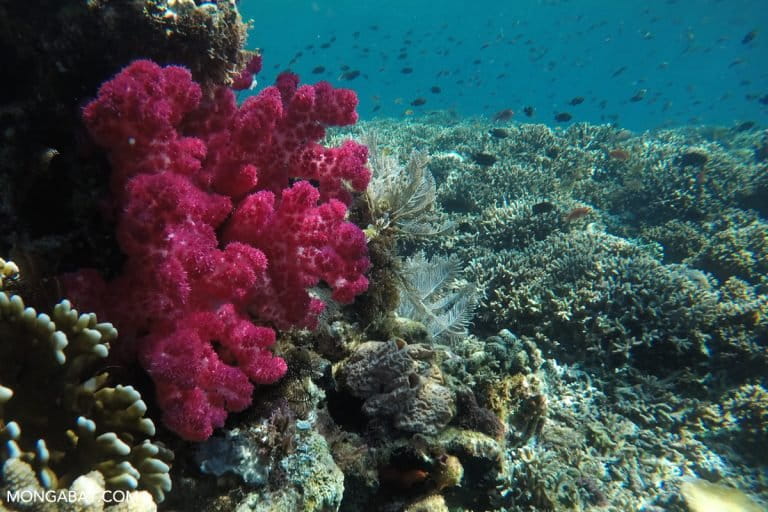- Indonesia will expand its marine protected area coverage to 325,000 square kilometers (125,000 square miles) by the end of this decade, or 10% of its total territorial waters, the fisheries ministry says.
- From 2030 to 2045, the government plans to triple that coverage to 975,000 km2 (376,000 mi2).
- An oceans conservation activist has welcomed the plan, but says the government needs to be able to square it with a recently announced fisheries management policy that critics say threatens the sustainability of fish stocks.
- The activist also emphasized the need to ensure the quality of the protection rather than the quantity.
JAKARTA — Indonesia plans to expand protection of its seas to cover an area nearly the size of Germany by 2030 — and then tripling it by 2045.
The country currently has 284,000 square kilometers (110,000 square miles) of marine area under protection, and plans to increase this to 325,000 km2 (125,000 mi2) by the end of this decade, or 10% of its total territorial waters, the fisheries ministry has announced. The move is part of the country’s contribution to the global “30 by 30” conservation goal, which aims to protect 30% of the world’s seas and lands by 2030.
From 2030 to 2045, the government plans to triple the marine protected area coverage to 975,000 km2 (376,000 mi2).
“The ocean must be protected,” fisheries minister Sakti Wahyu Trenggono said on Aug. 12 as quoted by state news agency Antara.
“Conservation [areas] will not only serve as fish spawning grounds, but will also can absorb carbon [emissions],” he added.

The ministry said it will develop strategies to beef up planning and monitoring of marine protected areas to ensure a sustainable management of these zones. It emphasized the need to improve the economic benefits of conservation, and to build on cultural development and community knowledge of different areas to bring about meaningful impacts.
“I think this is such an ambitious target,” Arisetiarso Soemodinoto, the oceans program head at the conservation NGO Yayasan Konservasi Alam Nusantara (YKAN), told Mongabay in an email. “But it can be achieved if the target is about expansion or adding the area that’s allocated for conservation.”
However, Arisetiarso said only about 25% of Indonesia’s current network of marine protected areas has proved effective at conserving fish stocks and biodiversity, and at ensuring equitable benefits for ocean-dependent communities. He also noted the fisheries ministry’s controversial plan to impose a new fisheries management regime based on quotas, and questioned how this would square with the expansion of marine protected areas.
“I have yet to see how the new fisheries management policy has touched on conservation areas to support its operation. It seems that they are two things that go their own way,” he said.
Critics have warned that the quota-based policy threatens the sustainability of fish stocks in waters that, for the most part, are already considered fully exploited. And given that the fisheries industry employs about 12 million Indonesians, Arisetiarso said it’s important that both the fisheries management policy and the marine protected area expansion policy complement each other.

Indonesia’s marine biodiversity plays an important role in the domestic and global supply of seafood. The country is home to some of the most diverse marine life on the planet, especially in its eastern region that falls within the Pacific Coral Triangle, an area renowned for its richness of corals and reef fish.
Arisetiarso said the government should not be chasing after an arbitrary target of protecting 30% of its seas without ensuring quality protection for these marine protected areas.
“Our work is not finished [just because we achieve] the maximum limit that’s suggested by the global public,” he said. “It is more important to have marine conservation areas that are managed effectively and justly than just going after coverage expansion.”
Basten Gokkon is a senior staff writer for Indonesia at Mongabay. Find him on Twitter @bgokkon.
FEEDBACK: Use this form to send a message to the author of this post. If you want to post a public comment, you can do that at the bottom of the page.
